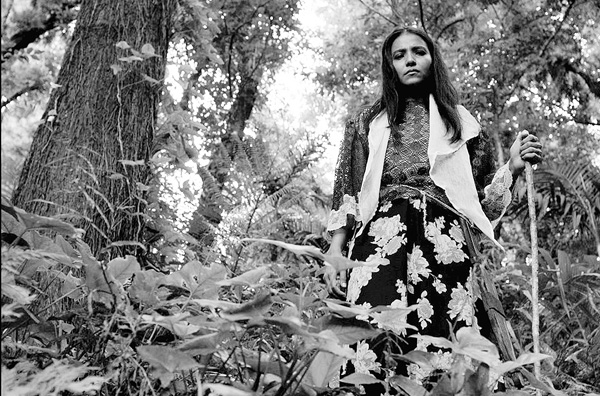Timeline of my experience watching this film:
Hour 1: I wish I had a coffee. It is 10AM and this film is incredibly slow moving. A few people walk out of the film.
Hour 2: I fall asleep during a 10 minute scene which is a conversation between two men. I wake up and feel much refreshed. I have an up and go and start to follow the narrative. More people walk out of the film.
Hour 3: I am wondering whether I should walk out of the film. I am questioning whether I can actually commit a full day to this film. The arguments for are my ancestral connections to the Philippines, my stubborn disdain for people who walk out of films, and a slight interest to find out where this is actually going. The arguments against are that I feel like I could be spending this time preparing for an essay due in a week. Or I could be watching The Bachelor. The idea of choosing The Bachelor over this film disgusts me and keeps me in my seat. More people walk out of the film.
Hour 4: The film starts gaining momentum with the introduction of fantasy elements (mischievous spirits). It makes me wish I had more of an understanding of Filipino culture, history and folklore. I no longer know what is real or not in the narrative. Actually, I throw away the idea of narrative and come to the conclusion that I am witnessing an alternate universe because the film is moving at the pace of life. The scenes where a person is standing staring at nothing and thinking remind me of the amount of time in my own life where I am literally doing nothing. Now I am watching an actor acting like they are literally doing nothing. And I am doing nothing. And nothing is happening. I am very hungry.
Break: It is sunny in Melbourne. It feels like springtime. I get a pizza sub from Subway and eat it in the sun. I buy a box of maltesers and go back into the cinema, sitting in the exact same seat as before. Only half of the original punters come back for the rest of the film. I feel a great sense of solidarity with these other stubborn cinephiles.
Hour 5: Stuff is getting good. Parallel stories are being told. I am excited for the point when they all come together. Everyone is wandering through the forest trying to find something, and they all have information that could help each other. This is feeling like a film again.
Hour 6: I start to lose concentration. I am thinking about my boyfriend returning from America in a couple of days. I am thinking about how it would feel to be weightless. I am thinking about the future of Virtual Reality and 360 cinema. I start to slowly drink a can of Mother to get my mind back on the film.
Hour 7: I have no idea what’s going on. I tune in to a scene where all the characters are eating a feast together in the forest, but they aren’t talking to each other. TALK TO EACH OTHER, I scream in my mind, EVERYONE AROUND YOU HAS VALUABLE INFORMATION. The feast gets really surreal and I get kind of annoyed. I usually like surreal scenes that pop out of nowhere, but I am on the end of my tether, 7 hours into this mess. My heart is palpitating from the can of Mother and lack of movement.
Hour 8: Everyone in the film is delivering monologues that wrap up all their actions and emotions, but I am not catching any of it. My mind is completely out of the cinema, the city, myself. I am incredibly restless. There are moments of deep clarity where I will watching a house burning for a couple of minutes, and I will feel like this film has touched a part of my soul that I never knew existed. Then a character that had died will be walking around, and someone will be crying on a grave of someone who hasn’t been mentioned before, and I realise I have received very little of what this film was sending out. When the credits role, the women behind me discuss how amazing the second half was, and how it all came neatly together, both in a micro narrative sense, and in a macro historical sense. I feel like I failed. I look around at other single cinephiles, and they look exhausted and confused.
Afterwards: I watch an American film about two women, best friends, who fall in love, but then one of them marries a man and I get mad about the heteronormative winning. A good way for me to get back to my reality.
